Similar to how painters use different brushes to create beautiful paintings, we select 3D printer nozzles to achieve varying levels of detail and accuracy while printing.
A 3D printer nozzle attaches to the heater block to feed melted plastic through a tiny hole and create 3D parts. The most common bore diameter in nozzles is 0.4mm. For most projects, you won’t need a bore diameter any smaller than that, unless you’re printing tiny parts with incredible detail.
Of course, there’s more to consider than just the size of the hole in the nozzle. You can’t just connect a nozzle with a 0.8mm bore diameter, press print, and get amazing results. You’ll have to fine-tune your software to accommodate the nozzle size if you’re changing it from the original. The print will also take much longer to complete with a smaller nozzle.
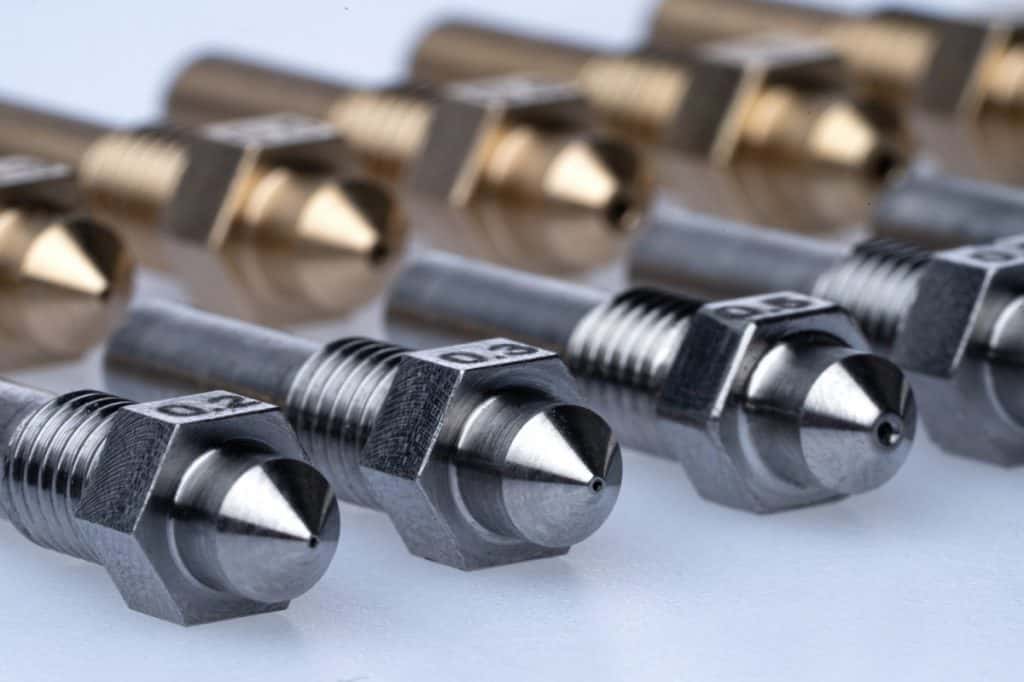
3D Printer Nozzle Materials
Most printer nozzles are made of brass because it’s relatively easy to machine and is durable enough to last a long time. Brass conducts heat very well for its price and can print almost any non-abrasive material. A brass nozzle can print massive amounts of PLA without wearing down, but if you’re looking to print other materials like glo and carbon, here are some other nozzle materials that you’ll require:
Stainless Steel
Stainless steel, like these on Amazon, nozzles are used when printing with chemically abrasive materials or to meet health and safety standards when printing for the food industry. These are more expensive than brass because they’re harder to machine and the material itself is more expensive.
Copper Nozzles
Copper nozzles, like these that I bought for my Ender 3 pro on Amazon, are excellent at transferring heat to the material quickly. So they’re good to use if you plan to use high feed rates because it will heat up better than brass. This is good for material like PEEK.
Assembled Nozzles
These nozzles have hardened steel inside or even certain stones like rubies for extreme abrasive resistance. These types of nozzles are more expensive than an entire entry level 3D printer.
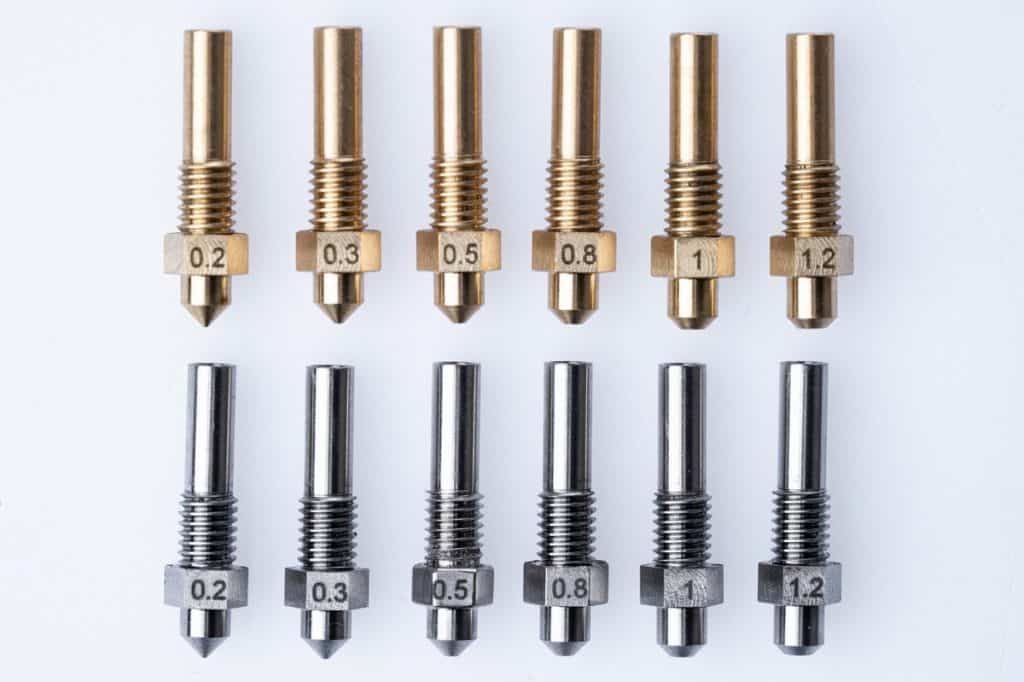
Are All 3D Printer Nozzles Universal?
3D Printer nozzles aren’t universal because some of them have different size threads to screw in. Printer nozzles also vary in length and width. Most printer nozzles have an M6 thread type, but not all, some use M5 or other thread types.
Many printer nozzles have external threads, but some are internally threaded. Make sure to check the compatibility of the nozzle with your specific 3D printer before making the purchase.
How To Choose A 3D Printer Nozzle Size
A nozzle size of 0.4mm is suitable for most 3D printed parts. This size achieves a balance between timely and accurate prints. So it can print stunning parts in a reasonable amount of time compared to smaller sized nozzles.
I only recommend going bigger than 0.4mm if you plan to print large parts. If you need to print tiny models with extreme detail, a nozzle bore size of around 0.2mm can be beneficial. Just remember to adjust your settings in your slicing software to accommodate the small nozzle.
What Thread Are 3D Printer Nozzles?
3D printer nozzles have an M6 screw thread. M6 is what we call a 6mm screw size. In rare cases, an M5 thread might be used with some 3D printers.
How Long Do 3D Printer Nozzles Last?
A brass nozzle should last many months or even years depending on the material you’re printing with and how much you’re printing. If you’re only printing with standard PLA, there should be hardly any wear and tear on the nozzle. As soon as you print with abrasive materials like carbon, glo, or glass, the lifespan of the nozzle decreases drastically.
So if you’re printing with abrasive materials, you’ll need a tough nozzle material like stainless steel or tungsten to get a longer life span.
How long do hardened nozzles last?
A hardened nozzle can last over a year if you’re not printing carbon, glo, glass or other rough materials. Hardened nozzles usually last at least 2 to 3 times longer than standard brass nozzles when printing with abrasive materials like glo.
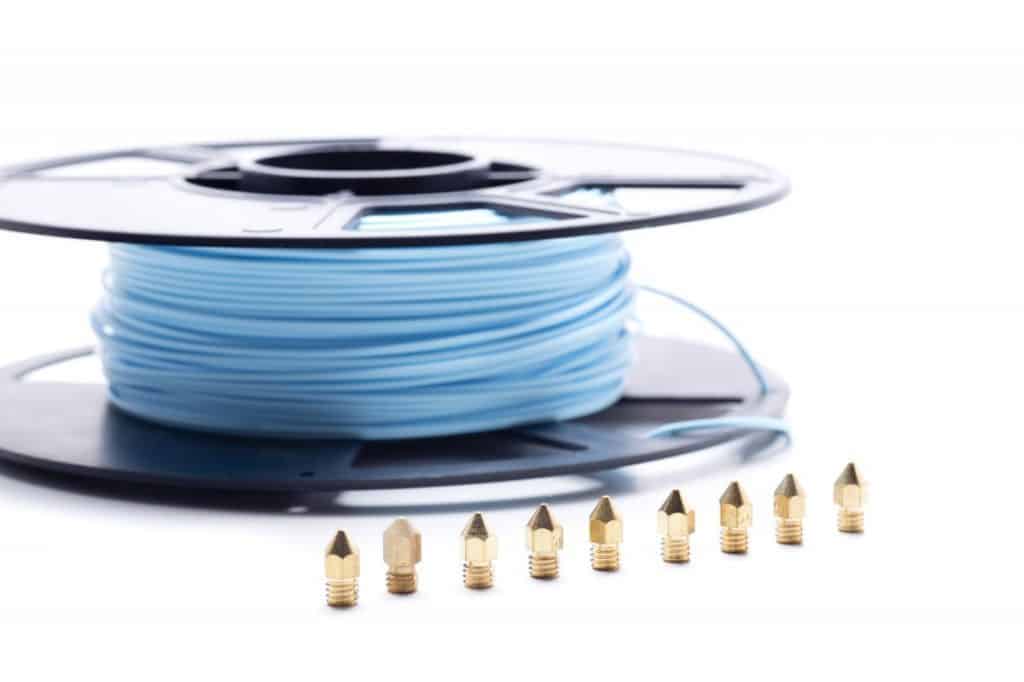
How Much Do 3D Printer Nozzles Cost?
3D printer nozzles, like these that I bought for my Ender 3 pro on Amazon, cost between $0.50 to $20 on average. Of course, there are specialized nozzles that cost many hundreds of dollars as well, but for most people, those aren’t necessary. As a rule of thumb, the cheaper the nozzle, the lower the lifespan will be, so don’t just get the cheapest option available. Cheap nozzles are usually made of low-grade material. With the way that metal is produced, there can be a difference in quality between two nozzles that are both made of brass.
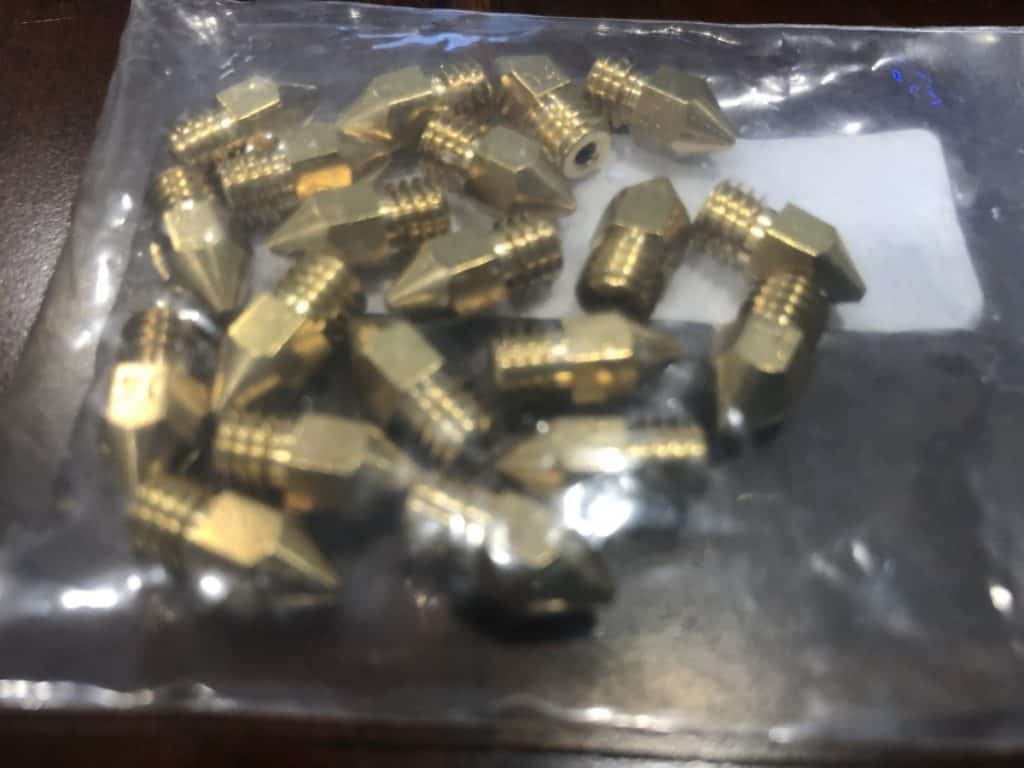
Are Steel Nozzles Worth It?
Steel nozzles are worth it if you regularly print with abrasive materials. A steel nozzle is also highly recommended when printing food grade parts and they transfer heat more efficiently. Another reason steel nozzles are worth it is because they last much longer than brass.
If you only print with standard non-abrasive filaments like standard PLA, ABS, etc, you won’t need to get a steel nozzle. (Stainless steel or hardened)
How Can You Tell If A 3D Printer Nozzle Is Clogged?
Under-extrusion is one of the best ways to tell if a 3D printer nozzle is clogged. Meaning that not enough filament is pushing out the nozzle to create perfect lines for the model. Also, if there are gouges on the sides of the filament as it comes out the nozzle, it’s probably blocked.
How Do You Unblock A 3D Printer Nozzle?
There are a few ways to unblock a printer nozzle, so I’ll go through some of the most popular methods from easiest to the more complicated.
Here is a guide I made that covers the process.
The Atomic Method
This involves heating the hot end to the standard operating temperature for the material you’re using and feeding filament through by hand until it comes out the nozzle without any deformities. Once the filament clearly feeds through the nozzle, let it cool down and it should be unclogged.
Feed a needle or wire through
If you can find a needle or wire that’s the same size as the bore of the nozzle, feed it through the nozzle to unclog it. The goal is to move the needle up and down inside the nozzle to break up any filament that’s blocking it. Then you’ll heat the hot end and feed filament through by hand to push the blockage out.
Chemically dissolve the blockage
Nozzles that are blocked up with PLA can be cleaned out with Ethyl Acetate, this is what people use to dissolve things like glue and nail polish. Leave the nozzle in a sealed container overnight for it to dissolve the PLA inside.
For ABS, acetone will work well to unclog a nozzle. In both cases, you must ensure to seal the container or the chemical will evaporate by the time you get back to it.
How Often Should You Clean Your 3D Printer Nozzle?
Cleaning out the nozzle shouldn’t be a scheduled activity. You only need to clean your printing nozzle if there appears to be defects in the extruded material. Use high-quality filaments to prevent unwanted debris passing through the nozzle. Keep the printing environment clean from dust and feed the filament through a hole in a sponge before it goes into the extruder to remove any dirt.
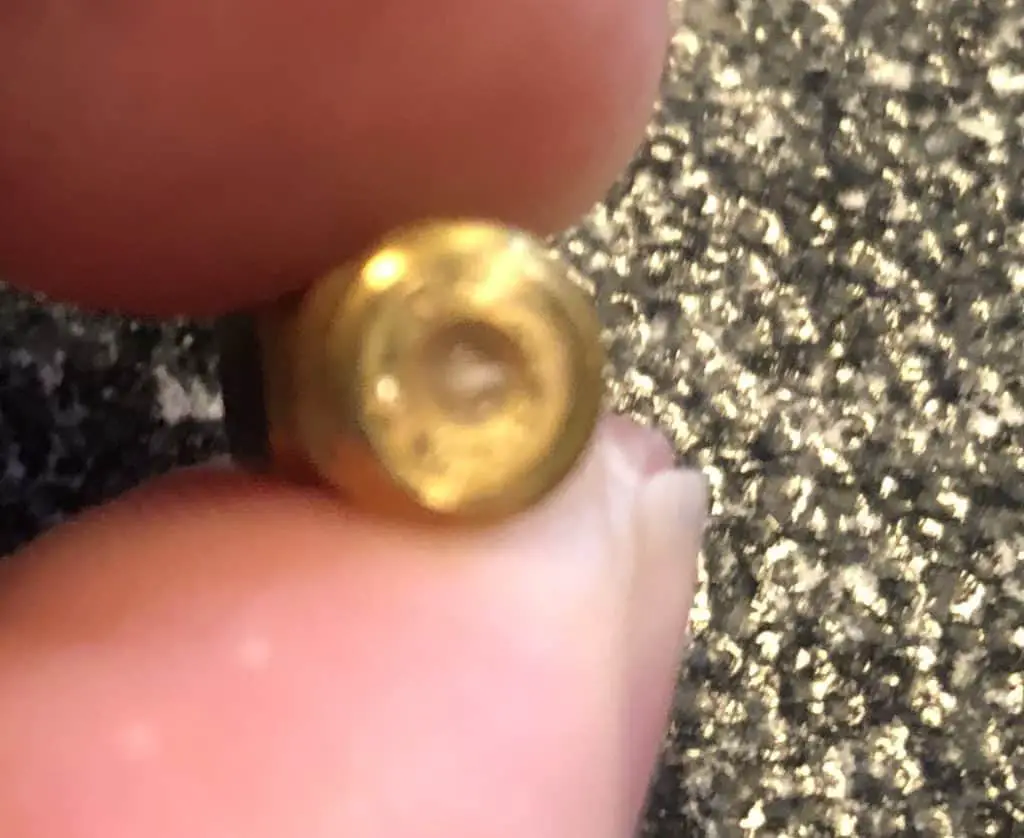
What Is The Smallest 3D Printing Nozzle?
The smallest nozzle size that I’ve seen is 0.1mm. For most people, it’s not advisable to use a nozzle bore this small. Not only is it difficult to work with, but printing times are also increased massively as so little material gets through the nozzle. Printing temperatures and speeds will have to be fine-tuned to get good results.
If you manage to set everything up perfectly, you should get 3D parts that are seamless, but I would rather print with a 0.4mm nozzle and polish off the end product myself with chemicals or wet sand paper.
Related Articles
- Create a Temperature Tower Using Cura – The Easy Way
- Cura Profiles
- What Is The Best Primer For 3d Prints?
- Best PLA Glue – The Answer Inside!
- Best 3D Printer Under $300
Make sure you check out our YouTube channel, and if you would like any additional details or have any questions, please leave a comment below or join us on Discord. If you liked this article and want to read others click here.
